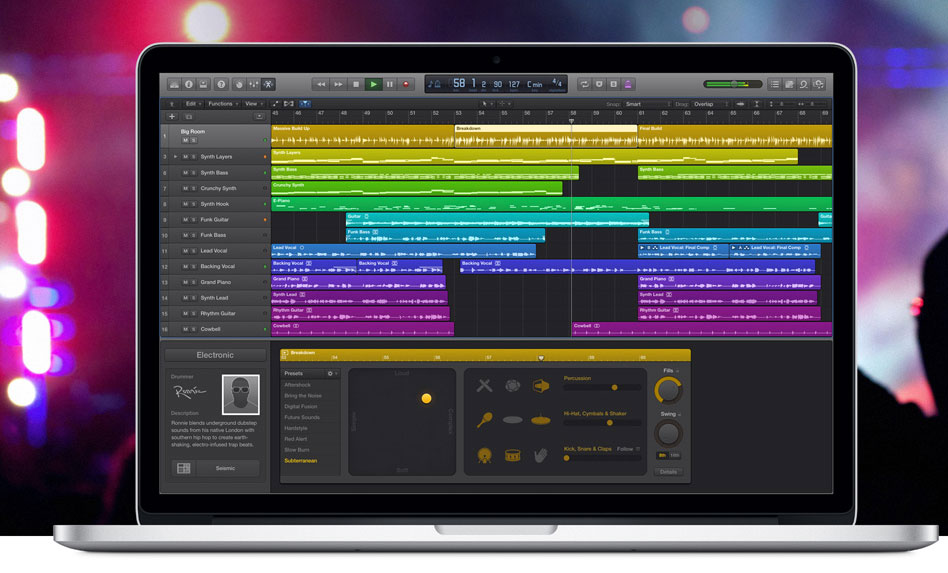
REVIEW: Logic Pro X
Posted on Jun 19, 2015
The mixer has had a minor overhaul too, with Relative and Trim modes giving you the ability to fine-tune existing automation by riding the fader.
Prior to NAB (and just in time for Musikmesse – timing again?), Apple also updated their audio editing and composition software, Logic Pro X. Logic makes a fantastic addition to FCP X, for those who need to do more audio manipulation than FCP X’s tools allow – which is probably nearly everyone.
Logic Pro X will import an FCP X XML, creating sensible track layouts, suitably named, based on the Roles you have assigned to the audio in FCP X. You’ll need to manually generate a reference video in FCP X as well – I usually just use ProRes Proxy which looks surprisingly good for the file size. Logic will convert the sample rate of any audio that doesn’t match the project settings (it actually gives you the option to change the project settings as well), and it gives you sensible dialog boxes to locate any missing audio. All in all, it seems to be a smooth and seamless operation – the only difficulties I had was with a project I started in another NLE, translated to FCP X using DaVinci Resolve and then exported to Logic, but that was really tempting fate, I suppose.
Automation comes through from FCP X, but not effects, which seems odd as many of FCP X’s audio effects have identical counterparts in Logic.
Sending an XML back to FCP X produces a Project with stems for each Logic track – the simplest way to integrate that back with your original edit is simply to add it as a compound clip, though you could add the stems back in individually, of course.
 Drum machine–style sequencing.
Drum machine–style sequencing.
Logic Pro X 10.1 includes a lot of new features, though most are targeted towards musicians, rather than audio post-production. These include new ‘Drummers’ – Logic’s groovy take on intelligent rhythm design, and an enhanced Piano Roll Editor, for tweaking MIDI data. More usefully for audio post, there is a new Compressor plug-in adding ‘Classic VCA’ – whilst Apple were at it, they redesigned the interface to the Compressor, and very pretty is it too. The Compressor and EQs – indeed most of the effects and audio generators in Logic – sound very good indeed. The Compressor in particular can deliver a nice crunch to bass and drums, or a smooth boost to vocals.
The mixer has had a minor overhaul too, with Relative and Trim modes giving you the ability to fine-tune existing automation by riding the fader – the mixer fader centres in its travel and becomes a ‘plus and minus’ control. Hardware desks have done this for decades – it gives a much finer and more intuitive control of the mix, so it’s great to see implemented here.
Fades are now rendered in real-time, and you can now manually organise your plug-ins in the menu, including creating custom categories. If you have a lot of plug-ins (and most audio people do) this makes a lot of sense.
Logic Pro X is a powerful audio and MIDI editor, with a host of great plug-ins included, and at a very attractive price (£149.99 at the time of writing). Although it’s a complex and complete piece of software, v10.1 includes a ‘beginners mode’, designed to attract users moving over from Garage Band (complete with hideous wooden ‘end cheeks’ on the window). This mode simplifies the user interface for the uninitiated – once you are familiar with the way the software works, you can turn off the nanny and dive into the complete package. There’s even a very cool iPad app that allows you to control Logic remotely – once you’ve tried tweaking an EQ with a multitouch interface, or used it to push up multiple faders simultaneously, going back to a mouse is tiresome.







